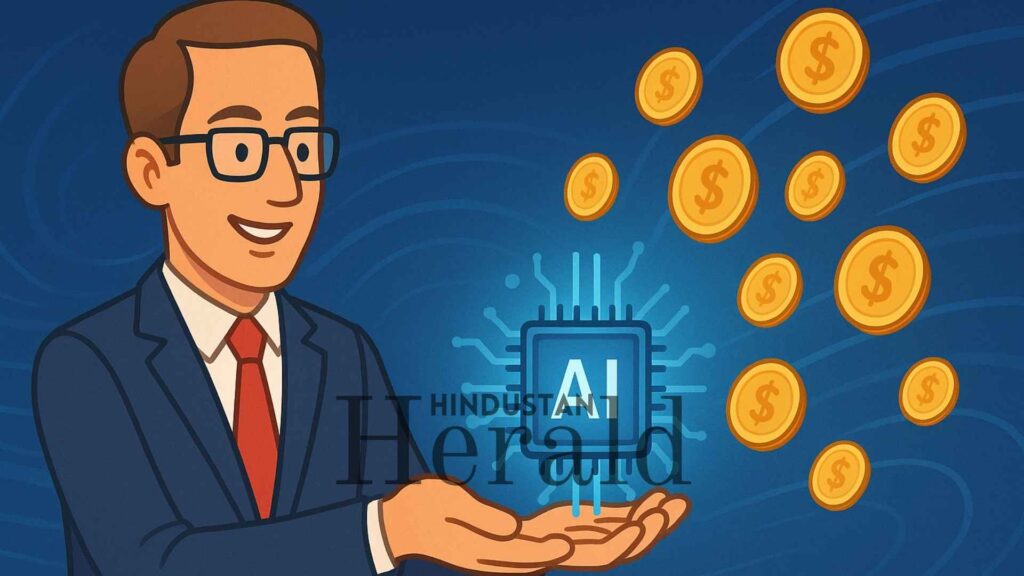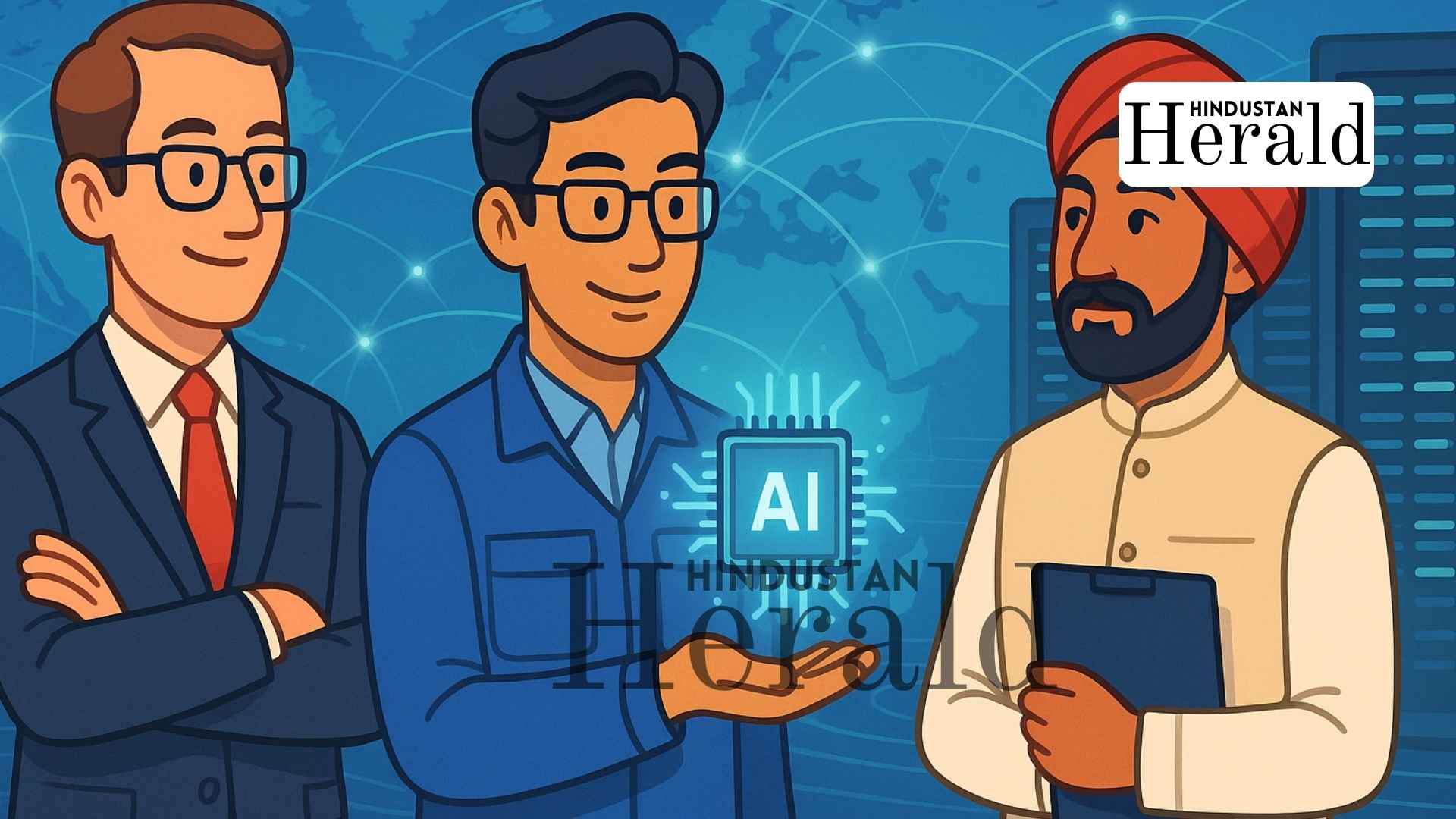New Delhi, October 30: Something changed in the global tech world this week. Artificial intelligence, which for years hovered somewhere between science experiment and marketing slogan, has finally shown what it can do for the bottom line.
Alphabet, the parent company of Google, smashed through the US$100 billion mark in quarterly revenue, a first for any tech firm. Samsung Electronics reported a 32% jump in profit, powered almost entirely by demand for AI chips. And in India, the Ministry of Electronics and Information Technology (MeitY) quietly delivered a message of its own: the country needs to stop depending on imported AI and start building its own.
Three stories, one theme AI is no longer a buzzword. It’s the new economy.
Alphabet’s Big Moment: When AI Turns Into Real Money
For Alphabet, the numbers speak louder than any keynote speech ever could. The company pulled in about US$102.3 billion for the quarter ending September 30, up roughly 16% from last year, according to NDTV and The Jakarta Post. Much of that came from AI, not from futuristic moonshots, but from the everyday stuff: smarter search, better ad targeting, and the rapidly growing Google Cloud business.
The company’s internal mantra for years was “AI first.” This quarter, it finally paid off. Integrating Gemini, Google’s flagship generative model, into its core products has quietly changed how the company earns. When Gmail finishes your sentence and YouTube recommends your next watch, that’s AI working, and now, it’s cashing in.

A senior executive told analysts the gains were “structural, not seasonal.” That’s corporate-speak for something permanent. Alphabet’s success means AI is no longer a cost centre. It’s a profit engine.
But this kind of dominance brings a shadow with it. Regulators in the EU, US, and increasingly India, are worried that the AI layer of the internet is being built almost entirely by a handful of companies. For countries like India, which rely on these systems for education, business, and even governance, the question is starting to sound urgent: whose intelligence are we really using?
India’s Push For Its Own AI Muscles
In Delhi, officials have been thinking about that question too. Speaking at a public event this week, Abhishek Singh, Additional Secretary at MeitY, said something that felt both obvious and overdue: “We need to focus on building our own AI ecosystem.”
The context is simple but serious. According to The Financial Express, India’s demand for GPUs the powerful processors that train AI models, is expected to triple to over 100,000 units in the coming years. Right now, most of those chips are imported, and most of the heavy computing happens on servers owned by American giants.
India’s AI Mission, launched earlier this year, was meant to change that. It promises a national network of AI computing facilities, open datasets, and funding for local language models. The goal: to make India less of a consumer and more of a creator in the AI world.
But the gap is wide. India spends less than 1% of its GDP on research and development, compared to about 3% in the United States. There’s world-class talent in Bengaluru, Hyderabad, and Pune, but not nearly enough infrastructure to support it.
That said, sparks of progress are visible. The Indian School of Business just launched an “AI Factory” to help startups turn academic research into market products. And in Bengaluru, the National Centre for Biological Sciences and ICTS have started CALIBRE, a research hub merging AI with biological science. These might sound like small steps, but together they show the beginnings of an ecosystem taking root.
Samsung’s Profit Rebound: The Hardware Boom Behind the Hype
Then there’s Samsung, whose story reminds us that AI isn’t just software and algorithms, it’s metal, silicon, and electricity too.
The South Korean giant reported a 32.5% rise in operating profit in its latest quarter, raking in KRW 86.1 trillion in revenue, according to its official results and reports from WKMG. The driver? AI again, but this time through the backdoor demand for memory chips and high-bandwidth memory used in the servers that run AI systems.
For the past couple of years, the global chip industry has been in a slump. Prices fell, inventories piled up, and the boom that had fueled pandemic-era growth dried out. Now, AI is breathing life back into it. Every major cloud provider, from Microsoft and Amazon to Google and OpenAI, is racing to build out data centres, and Samsung sits at the centre of that feeding frenzy.
The company’s focus on HBM (High Bandwidth Memory) technology has made it a critical supplier in the AI supply chain, alongside SK Hynix and Micron. That’s not just good for business; it’s geopolitical leverage. As the US-China chip rivalry hardens, countries like South Korea find themselves holding cards that even the world’s biggest software companies need to play.
For India, watching from the sidelines, there’s a lesson here. The government’s own semiconductor mission is meant to create a homegrown chip ecosystem. Samsung’s success shows what that could look like and how high the stakes are if it fails.
A New Economic Triangle: Software, Hardware, and Sovereignty
Taken together, these stories sketch out a global triangle that defines the AI economy.
At one end sits Alphabet, showing how intelligence itself can be monetised.
At another, Samsung, proving that none of this is possible without the physical machines to run it.
And at the third, India, is trying to secure a place between them to build, rather than buy, the next generation of intelligence.
This isn’t just about GDP or innovation rankings. It’s about who controls the infrastructure of the future. Just as oil shaped the 20th century, data and computing power will shape the 21st. And like oil, whoever refines it, not just extracts it, holds the influence.
India has the people. It has the market. It even has the political will. What it doesn’t yet have is the machinery, the high-end chips, the data centres, the research backbone. That’s the gap MeitY wants to close. But time is short. AI cycles are moving faster than any previous wave of technology. The risk isn’t just falling behind, it’s being locked out entirely.
The World Has Crossed the Line
What happened on October 30 wasn’t just another earnings day. It was a milestone in how technology, business, and national strategy now intersect.
Alphabet showed the money. Samsung showed the machinery. India showed ambition.
AI is no longer a promise. It’s the playing field, and everyone’s already in the game.
Stay ahead with Hindustan Herald — bringing you trusted news, sharp analysis, and stories that matter across Politics, Business, Technology, Sports, Entertainment, Lifestyle, and more.
Connect with us on Facebook, Instagram, X (Twitter), LinkedIn, YouTube, and join our Telegram community @hindustanherald for real-time updates.
Tech writer passionate about AI, startups, and the digital economy, blending industry insights with storytelling.






